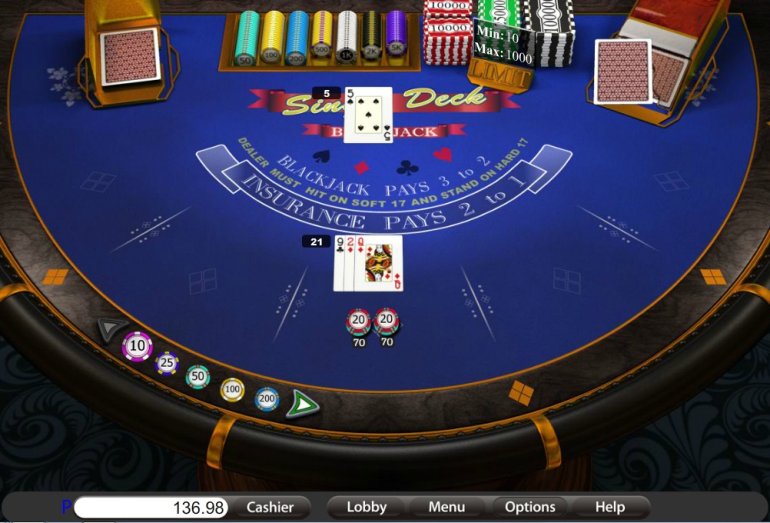_770.jpg)
Card Counting Systems
Over the last few years, experts in this intellectual game of chance have developed dozens of card-counting systems. These systems help them gain a mathematical advantage over the casino, ultimately putting them in the black.
These strategies have some significant differences, but they share a common principle. They all help determine the high cards/low cards ratio in the remainder of the deck (or decks if there are more than one). This information allows professional blackjack players to determine whether the conditions are favorable for them and change the bet size according to this data.
- The more high cards are still in the deck or shoe, the larger the bet size.
- The more low cards are, the lower the bet, respectively.
Read more about the general principles of card counting systems in the particular articles on Casinoz.
Two or three systems are prevalent in modern gambling, and other card-counting techniques are undeservedly forgotten, although they are pretty efficient.

What Is the Red Seven Count?
The Red 7 Count was invented by Arnold Snyder, a famous professional player. Although it is elementary, convenient, and effective, it is not particularly popular. However, many leading experts recommend it to novice players.
Before you start studying it, you must master the basic blackjack strategy. You should also find out how to change it by specific rules. As soon as you are well up in this issue, you can start using the Red 7 Count.
This strategy is suitable for novice players who are not ready to use more complex systems due to their lack of experience. According to the experts, the Red 7 Count system is almost as efficient as the most popular Hi/Lo system, but it is much easier.
You need to keep an eye on low and high cards. There is no need to distinguish between aces and ten-value cards, significantly simplifying counting.
Red 7 Count System Description
According to the Red Seven Count system:
- ten-value cards and aces are worth -1,
- deuces, threes, fours, fives, and sevens give +1,
- eights and nines are not counted.
There is a unique attitude towards sevens:
- red sevens provide +1,
- black sevens are treated as zero.
They also do not affect the total score. It is necessary to create imbalance.
So, you count the cards that the croupier deals to you, other players at the table, and himself, keeping in mind the score of these cards according to their values.
- For instance, when a three shows up, you add 1.
- If a four is dealt, the score is 2 (add one point to one point for a three).
- If there is an ace, the score becomes +1 (one is subtracted from the score.)
In general, the principle should be clear.
Mastering Red 7 Count
First of all, you need to memorize the value of all cards. You can take a deck, shuffle cards, and count them, taking one card by the other. When you finish counting the entire deck, the score should equal +2. It is explained by the presence of red sevens, each of which brings +1.
When you can count them fluently and stop losing count, start mastering how to count groups of cards. Reveal two of them and count pairs simultaneously. It's not as hard as it may seem but very convenient.
Having mastered this approach, try to count three or four cards simultaneously. In this way, you will significantly speed up the process. It will be easier to resist various distracting factors, including the partners' voices at the table, questions from waitresses, music in the hall, etc.
Then you can practice faning out the cards and determining the score of this group of cards at first glance. Always bear in mind that accuracy should dominate. The ability to count cards quickly doesn't make sense if you make mistakes.
How to Count Card by Red 7 Count
There are some publications on Casinoz explaining the ways to start card counting in practice at casinos. You should read these articles and take advantage of all these recommendations.
As for the Red 7 Count system, you should consider the number of decks used in this game to determine the number of points from which you should start counting.
As mentioned above, the total score of the entire deck is +2 because of two red sevens in the deck that bring +1 each. Thus, if you play single-deck blackjack, the initial score is -2. If there are two decks, it is equal to -4, and so on up to -16 in the case of eight decks.
Changing Bets by Red 7 Count
Now let's talk about how to profit from the Red Seven Count. The basic idea is to raise the bet if the total score increases because you have a mathematical advantage over the casino. It is also necessary to decrease it when the score is reduced because the casino has an advantage.
So, if the total score is negative, you wager the minimum amount (let's assume it is one chip.) When it becomes zero, you should raise it to two chips. When the situation becomes favorable for the player, the bet varies depending on the score, the number of decks involved in the process, and other factors.
The following table will help you to find answers to this question.
| Current Count | 1 Deck | 2 Decks | Several Decks in a Shoe |
| Negative | 1 | 1 | 1 |
| 0 | 2 | 2 | 2 |
| +2 | 4 | 2 | 2 |
| +4 | 4 | 3 | 2 |
| +6 | 4 | 4 | 3 |
| +8 | 4 | 6 | 4 |
| +12 | 4 | 6 | 6 |
| +16 | 4 | 6 | 8 |
If you play according to this scheme, you will wager more significant amounts in a favorable situation. Therefore, you will win more frequently on large bets and lose small bets.
However, remember that this rule is valid only in the long run. Any outcome of a given round is possible. The counting strategy does not ensure that you will win a particular game.
The counter aims to gain a mathematical advantage over the casino, which will gradually materialize as a positive balance.
Bet Size
Which minimum bet should you select? Professionals do not come to a consensus concerning this issue. For example, some recommend that players bring with them to a casino an amount equal to at least one hundred and fifty basic bets. Moreover, this bankroll should form only a portion of the money provided for the game because even experienced counters have unsuccessful episodes that may last several visits to gambling establishments.
Practice the 7 Red Count system playing these games.
| Name | Soft | Return to player | ||
|
|
99.78% | |||
|
|
99.69% | |||
|
|
99.65% | |||
|
|
99.6% | |||
|
|
99.59% | |||
|
|
99.59% | |||
|
|
99.54% | |||
|
|
99.54% | |||
|
|
99.54% | |||
|
|
99.33% |
Some Additional Advice
To sum up, we will provide you with some recommendations and warnings.
- Never try to count cards at online casinos with blackjack running on a random number generator. In such games, all the cards are shuffled before each deal.
- Try to look for the most beneficial versions of blackjack. It is sometimes better to visit a casino far from you than to play somewhere near your home. Special free and fee-based applications allow for calculating the house edge with a specific set of rules.
- You must notice how many cards the dealer cuts in the shoe. The minor portion of the deck he cuts out, the more accurate your score will be. Later, you will learn how to conduct current and true counts (explained in a separate article on Casinoz).
- Never cease to gain new skills. The Red 7 Count is undoubtedly uncomplicated and convenient to attract new players, but professional players use more sophisticated strategies. Users can find helpful information in special articles.
Good luck!




































